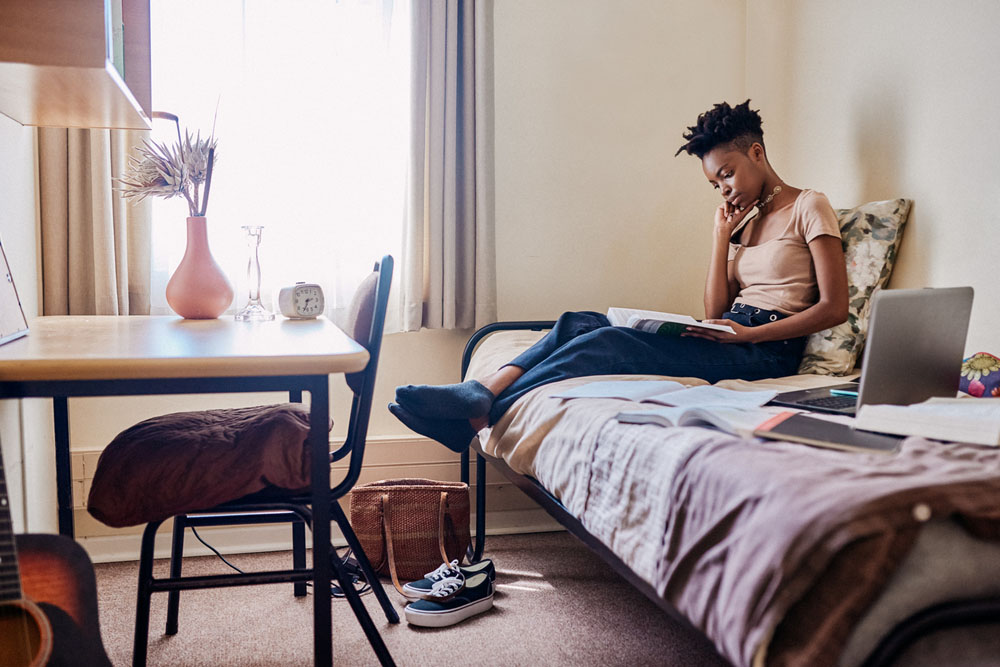Behavioural Therapy for Young Kids: What It Looks Like

Discover tips, treatment options, and support strategies from the Finding Focus Care Team

Last Update: July 20th, 2025 | Estimated Read Time: 7 min
Understanding ADHD in Childhood
ADHD, Attention-Deficit/Hyperactivity Disorder, isn’t just a concern for teens or adults. Many symptoms appear early in life, often by age 5, and can significantly impact a child’s home, school, and social experiences. Children aged 5 to 12 with ADHD may struggle to sit still, follow instructions, control impulses, or manage emotions. These challenges can lead to frequent classroom disruptions, conflicts with siblings or peers, and deep frustration for parents and caregivers.
While medication is commonly discussed, it’s not always the first, or only, step. Behavioural therapy, especially when started early, plays a central role in helping children develop the skills they need to thrive.
Let’s explore what behavioural therapy actually looks like for young kids with ADHD, and how it can support the entire family.
What Is Behavioural Therapy?
Behavioural therapy for ADHD in children focuses on teaching new, constructive behaviours while reducing disruptive or harmful ones. It's based on the principles of behavioural psychology: when behaviours are rewarded, they’re more likely to be repeated; when they’re ignored or responded to with clear consequences, they tend to fade.
This form of therapy typically involves both the child and their caregivers. Parents play a key role in learning new strategies, which they then apply consistently at home. According to the Canadian ADHD Resource Alliance (CADDRA), behavioural therapy is the recommended first-line treatment for preschoolers with ADHD and remains a cornerstone of treatment for children through the age of 12.
Core Features of Behavioural Therapy for Kids
1. Parent Training in Behavioural Management
One of the most effective and evidence-based components of therapy involves training parents in specific techniques that promote positive behaviour. In these sessions, therapists coach caregivers on how to:
- Set clear and consistent rules
- Use praise and rewards to reinforce desirable behaviour
- Apply structured consequences for rule-breaking
- Stay calm and emotionally regulated during difficult moments
Research shows that parent management training not only improves the child’s behaviour but also reduces caregiver stress and feelings of helplessness (Pelham & Fabiano, 2008).
Example in Practice: A parent might learn to implement a star chart for completing morning routines, offering a small reward at the end of the week. Consistency is key.
2. Skills-Building for the Child
Children also engage directly in therapy, often through play, storytelling, and role-play. Sessions may help them develop skills in:
- Emotional self-regulation (e.g., recognizing anger and using calming strategies)
- Social interaction (e.g., waiting their turn, sharing toys)
- Problem-solving (e.g., asking for help instead of yelling)
Therapists often use visual aids, puppets, and games to make these lessons relatable and fun.
Even short-term interventions that teach children social and emotional skills can have lasting benefits in peer relationships and classroom behaviour.
3. School Collaboration
Therapists frequently work in partnership with teachers and school staff to ensure consistent behavioural support across settings. They may help implement strategies like:
- Daily report cards for tracking behaviour
- Scheduled movement breaks to help manage hyperactivity
- Seating the child near the teacher to reduce distractions
These collaborative approaches improve outcomes and foster better understanding among educators about ADHD (Evans et al., 2014).
What Does a Typical Session Look Like?
Sessions are usually 45–60 minutes and occur weekly or biweekly. For younger children, sessions may be split between direct work with the child and coaching time with parents. Some elements of a typical therapy session might include:
- Check-in with parents about recent behaviours and progress
- Play-based activities to practice social skills (like turn-taking or asking for help)
- Behavioural rehearsals using role-play to navigate common challenges
- Planning and homework assignments for parents to try new techniques at home
For instance, a therapist might create a “cool-down corner” with a child, where they can go when feeling overwhelmed. At home, parents practice prompting the child to use the space appropriately, reinforcing self-regulation in real time.
Benefits of Behavioural Therapy
Behavioural therapy doesn’t just aim to reduce “bad” behaviour, it builds skills that last a lifetime. Some of the benefits include:
- Improved listening, cooperation, and task completion
- Better peer interactions and fewer social conflicts
- Reduced defiance, aggression, and emotional outbursts
- Increased parental confidence and reduced stress
- Enhanced school functioning and engagement
A comprehensive meta-analysis by Daley et al. (2014) found that behavioural interventions led to meaningful improvements in core ADHD symptoms, particularly in younger children, and should be considered a primary treatment approach, especially when medication is not preferred or tolerated.
Common Misconceptions About Behavioural Therapy
“Therapy is just talking, my child won’t sit still that long.”
Behavioural therapy is highly active and hands-on. For younger kids, it often involves play-based learning that keeps them engaged and moving.
“We’ve tried time-outs. They don’t work.”
Time-outs, when used inconsistently or without clear structure, often fail. A trained therapist can help tailor strategies that are developmentally appropriate and grounded in evidence.
“Medication works faster, why bother with therapy?”
While medication can be helpful, it doesn’t teach long-term skills. Behavioural therapy builds a foundation that supports children throughout life, in the classroom, at home, and in social settings.
Tips for Parents Starting Therapy
If you’re considering behavioural therapy for your child, here are some tips to get started:
- Be consistent. Children with ADHD thrive on routine. Try to apply the same strategies at home that your therapist recommends.
- Track progress. Use a notebook, app, or sticker chart to monitor changes. Small wins add up.
- Stay patient. Behaviour change takes time, and setbacks are normal.
- Celebrate effort. Praise attempts, not just results. “You worked really hard to stay calm today” can go a long way.
- Ask questions. Your therapist is your partner, no question is too small or silly.
When to Seek Help
You don’t need to wait for a crisis to seek therapy. If your child:
- Has daily tantrums or outbursts
- Can’t follow basic instructions
- Struggles to maintain friendships
- Gets frequent disciplinary action at school
- Causes ongoing stress for the family
It may be time to explore behavioural support. The earlier therapy begins, the more tools your child and family will have to navigate challenges.
Final Thoughts: Small Steps, Lasting Impact
Raising a child with ADHD comes with unique joys and frustrations. Behavioural therapy offers hope, not just for managing symptoms, but for unlocking a child’s potential. It teaches them how to thrive, connect, and feel successful. And it empowers parents to become more confident guides on the journey.
At Finding Focus, we believe in supporting every child and every family with compassion, evidence, and encouragement. You’re not alone, and the right tools can make all the difference.
Finding Focus Care Team
We are a group of nurse practitioners, continuous care specialists, creators, and writers, all committed to excellence in patient care and expertise in ADHD. We share content that illuminates aspects of ADHD and broader health care topics. Each article is medically verified and approved by the Finding Focus Care Team. You can contact us at Finding Focus Support if you have any questions!
References
Pelham, W. E., & Fabiano, G. A. (2008). Evidence-Based Psychosocial Treatments for Attention-Deficit/Hyperactivity Disorder. Journal of Clinical Child & Adolescent Psychology, 37(1), 184–214. Link
Evans, S. W., Owens, J. S., & Bunford, N. (2014). Evidence-Based Psychosocial Treatments for Children and Adolescents with Attention-Deficit/Hyperactivity Disorder. Journal of Clinical Child & Adolescent Psychology, 43(4), 527–551. Link
Daley, D., Van der Oord, S., Ferrin, M., Danckaerts, M., Doepfner, M., Cortese, S., ... & Sonuga-Barke, E. J. S. (2014). Behavioural Interventions in Attention-Deficit/Hyperactivity Disorder: A Meta-Analysis of Randomized Controlled Trials Across Multiple Outcome Domains. Journal of the American Academy of Child & Adolescent Psychiatry, 53(8), 835–847.e5. Link





